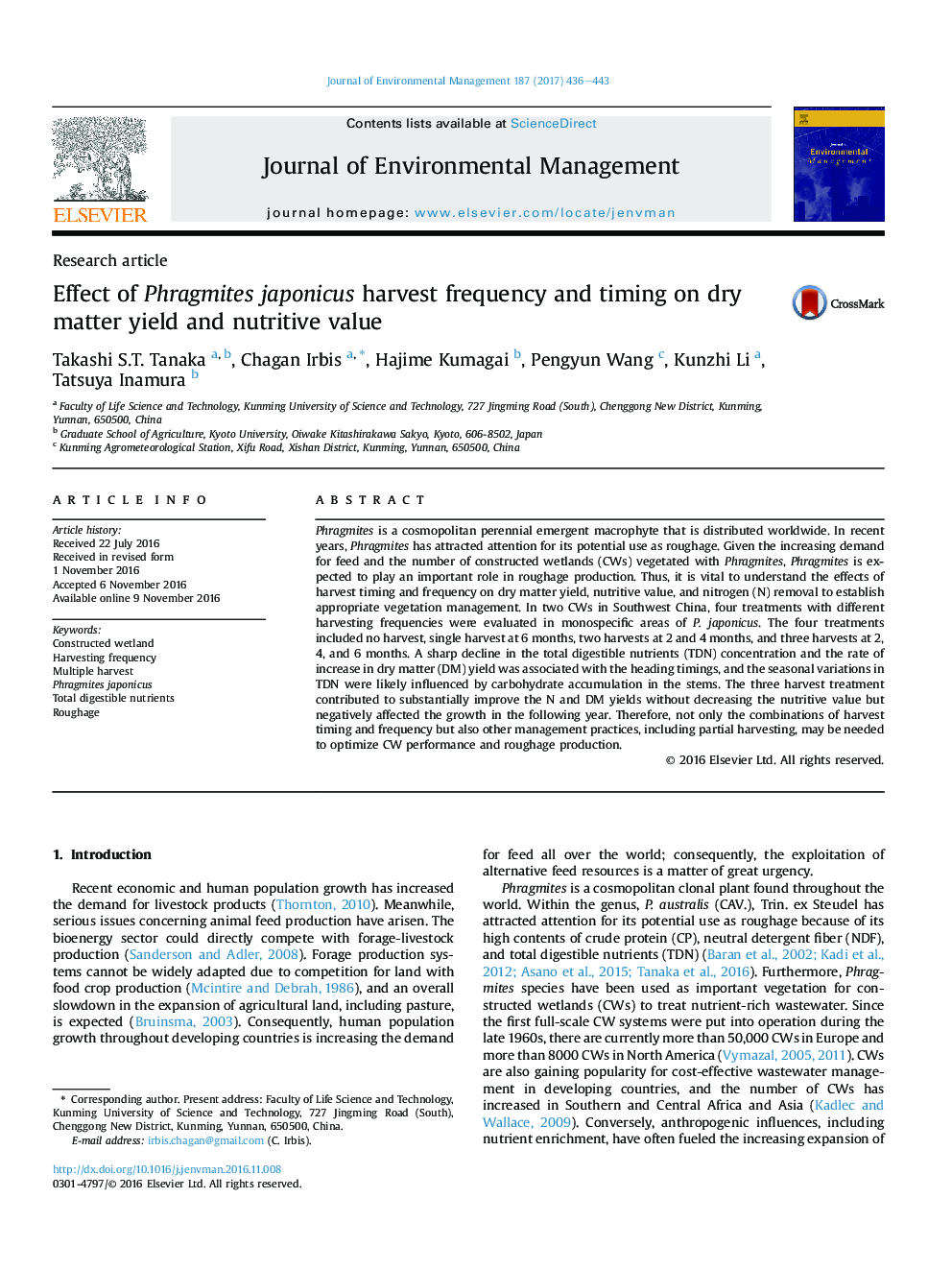| کد مقاله | کد نشریه | سال انتشار | مقاله انگلیسی | نسخه تمام متن |
|---|---|---|---|---|
| 5117392 | 1485228 | 2017 | 8 صفحه PDF | دانلود رایگان |
- We evaluate the nutritive value of Phragmites japonicus for roughage.
- Sharp decline in total digestible nutrients is associated with heading time.
- Truly digestible non-fibrous carbohydrate affects total digestible nutrients.
- Dry matter and nitrogen yields can be improved by high frequency of harvest.
- High frequency of harvest might decline the subsequent aboveground regrowth.
Phragmites is a cosmopolitan perennial emergent macrophyte that is distributed worldwide. In recent years, Phragmites has attracted attention for its potential use as roughage. Given the increasing demand for feed and the number of constructed wetlands (CWs) vegetated with Phragmites, Phragmites is expected to play an important role in roughage production. Thus, it is vital to understand the effects of harvest timing and frequency on dry matter yield, nutritive value, and nitrogen (N) removal to establish appropriate vegetation management. In two CWs in Southwest China, four treatments with different harvesting frequencies were evaluated in monospecific areas of P. japonicus. The four treatments included no harvest, single harvest at 6 months, two harvests at 2 and 4 months, and three harvests at 2, 4, and 6 months. A sharp decline in the total digestible nutrients (TDN) concentration and the rate of increase in dry matter (DM) yield was associated with the heading timings, and the seasonal variations in TDN were likely influenced by carbohydrate accumulation in the stems. The three harvest treatment contributed to substantially improve the N and DM yields without decreasing the nutritive value but negatively affected the growth in the following year. Therefore, not only the combinations of harvest timing and frequency but also other management practices, including partial harvesting, may be needed to optimize CW performance and roughage production.
Journal: Journal of Environmental Management - Volume 187, 1 February 2017, Pages 436-443
